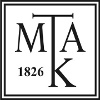Horváth, László (2025) Az E/3.személyben -n ragos igék egy középmagyar korpuszban = Verbs with the -n suffix in the third person singular in a Middle Hungarian corpus. MAGYAR NYELV, 121 (1). pp. 14-24. ISSN 0025-0228
|
Text
HorvathL_MNy_25-11.pdf - Published Version Available under License Creative Commons Attribution Non-commercial No Derivatives. Download (376kB) | Preview |
Abstract
A tanulmány középpontjában egy sajátos, egyedeinek számát tekintve kicsi, de a nyelvhasználatban betöltött szerepét tekintve fontos igecsoport áll. Tagjait az köti össze, hogy a kijelentő mód jelen idejének E/3. személyében ragtalan formájuk mellett -n ragos alakjuk is van. Ennek az igecsoportnak a nyelvtörténetírásban a jelentőségéhez mértnél kevesebb hely jutott. Az elemzés ezt az igecsoportot a HUN-REN Nyelvtudományi Kutatóközpontban épült Középmagyar emlékirat- és drámakorpusz segítségével mutatja be. Nagy figyelmet szentel a regiszterekbeli eltéréseknek. Bár a regiszterek összképére nézve a ragtalan és a ragos formák viselkedése nem különbözik szignifikáns mértékben, a részleteket tekintve a korpusz adatainak szemléje számos olyan megfigyelésre ad módot, amely új és előrevivő mozzanat az igecsoport történetének tanulmányozásában.| The study focuses on a specific group of verbs which is small in terms of the number of its members, but important in its role in language use. What connects the members of this group is that, in the indicative mood present tense third person singular, they have both a form with no suffix and a form with an ‑n suffix. This group of verbs has received less attention in the course of the his-tory of linguistics than its significance warrants. The analysis investigates this group of verbs using the Middle Hungarian Corpus of Memoirs and Drama built at the HUN-REN Research Centre for Linguistics. It pays close attention to differences across registers. Although, in terms of the overall picture of registers, the behaviour of forms with and without the suffix does not differ significantly, a detailed examination of the corpus data allows for a number of observations that provide new and progressive insights into the study of the history of this verb group.
| Item Type: | Article |
|---|---|
| Uncontrolled Keywords: | -n ragos igék E/3.-ban, ragtalan és ragos igealakok versengése, Középmagyar emlékirat- és drámakorpusz, regiszterek összevetése, gyakorisági felmérés, verbs with the -n suffix in the third person singular, competition between forms with and without the suffix, Corpus of Middle Hungarian Memoirs and Drama, comparison of registers, frequency survey |
| Subjects: | P Language and Literature / nyelvészet és irodalom > P0 Philology. Linguistics / filológia, nyelvészet P Language and Literature / nyelvészet és irodalom > PH Finno-Ugrian, Basque languages and literatures / finnugor és baszk nyelvek és irodalom > PH04 Hungarian language and literature / magyar nyelv és irodalom |
| SWORD Depositor: | MTMT SWORD |
| Depositing User: | MTMT SWORD |
| Date Deposited: | 21 May 2025 11:30 |
| Last Modified: | 21 May 2025 11:30 |
| URI: | https://real.mtak.hu/id/eprint/219157 |
Actions (login required)
 |
Edit Item |



